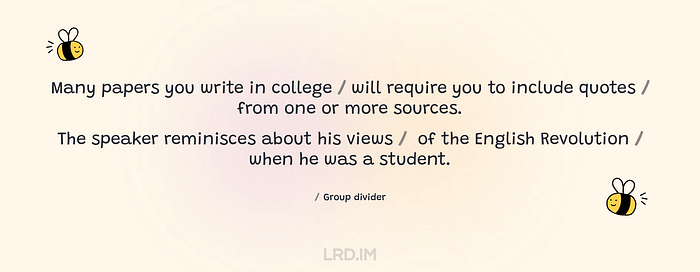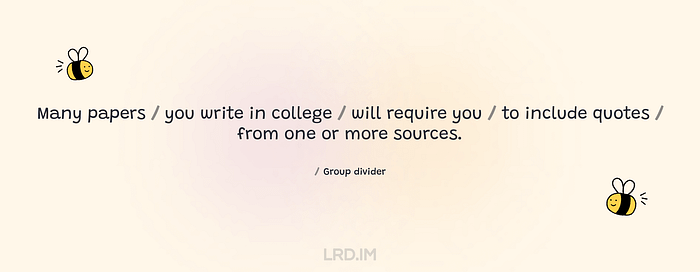English speaking skills for PTE test

I shared my excitement about the PTE test result in the previous post. In this post, I will detail the English-speaking skills I learned during the three-month learning journey, which specifically meet the PTE test criteria.
PTE’s criteria
Let’s take a look at the two key criteria in the PTE’s speaking component: Pronunciation and Fluency.

Based on these criteria, I would like to highlight these key points:
Pronunciation:
- Vowels and consonants;
- Word stress;
- Sentence-level stress;
- Assimilation and deletions.
Fluency:
- Rhythm and phrasing;
- No hesitations.
As we can see, the PTE’s test criteria clearly show concepts we must fully understand and perfectly present if we want to achieve a higher score. In the following text, I will present my comprehension of these concepts, supported by related online resources.
Pronunciation
Vowels and consonants
In everyday conversations, sightly mispronounced words often do not significantly disrupt the flow of our discussion. But thanks to modern technology, PTE’s scoring is based on algorithms and is implemented by computers, which can easily detect each mispronunciation. Therefore, the ability to pronounce words clearly and accurately is crucial.
I have tried numerous methods to improve my pronunciation and reduce Chinese accent including speaking loudly, having more emotion, and directly imitating local accents. However, it didn’t work as expected, it did not meet my expectation, resulting in a low score in PTE practice.
Changes occurred the time I met Sun’s tutorials and BBC Learning English collection on YouTube. These pronunciation videos elaborate on vowel and consonant details, with vivid body language and emotion.
As non-native speakers who want to pronounce concisely, we must focus on these particular points:
Mouth Shape
We can try to imitate the mouth shape that vowels and consonants request. For example:
- When pronouncing
/æ/sounds likeAgricultureandActivity, we should open our mouths as large as possible; - When pronouncing
/i:/sounds likeTheseandFeed, the corners of our mouths should be as far apart as possible.

Tongue Position
We should also pay attention to the tongue position. For example:
- The
/θ/sound requires us to extend the tongue forward; - The
/r/sound requires us to pull the front part of the tongues back and up and keep the back stable, making our tongues fatter and thicker.

Breath
We should also carefully control our breath, ensuring vowels and consonants are presented appropriately. For example:
- When pronouncing
/θ/likeThroughandThesis, we should ensure that the airflow passes through the gap between our teeth and lips; - When pronouncing
/b/and/p/likeBigandPicture, we should ensure that the airflow is completely blocked and then released suddenly.
Focusing on these points helps us ensure our study paths are on the right track, and consistently improve our pronunciation. In addition, there are two tips:
- Don’t try to imitate accents. The PTE test does not expect you to have a perfect British or American accent. For beginners, attempting to achieve such an accent is time-consuming and pointless.
- Never compare pronunciations between English and Chinese. For instance, the Cantonese pronunciation
士多啤梨is often equated withStrawberryin English, which overlooks many nuances. Therefore, it is important to acknowledge that the pronunciation of English and Chinese words are completely different.
Online Resources:
Word stress
Each Chinese character has only one syllable, whereas English words typically consist of two or more syllables.
For example, the word water consists of two syllables: wa-ter, and phenomenon consists of five syllables: phe-nom-e-non. It depends on how many vowel sounds the word includes.

Furthermore, an English word consisting of two or more syllables includes both stressed syllables and unstressed syllables. These are indicated by the phonetic symbols found in dictionaries.
For example, the phonetic symbol of agri-cul-ture is /ˈæɡrɪ-kʌl-tʃər/, we can see the stress mark /'/ is placed in the first syllable /ˈæɡrɪ/, which known as a stressed syllable, while others are unstressed syllables.

An interesting rule to note is that the stressed syllable can be vary within the same word depending on its function in a sentence. For example:
- When
Projectis acting as a noun, it is pronounced:/ˈprɑːdʒekt/ - When
Projectis acting as a verb, it is pronounced:/prəˈdʒekt/
What should we do?
Pronounce each syllable with different efforts:
- Stressed syllables should be pronounced longer and louder;
- Unstressed syllables should be pronounced shorter and thinner, or take place from the Schwa (we will discuss it later.)
When training pronunciation, I strongly recommend exaggerating these nuances to ensure we are on the right track and fully comprehend this concept. Eventually, it should sound natural and require less effort.
Properly presenting word stress is key to making our speech more like English, and it can significantly help in shedding “Chinglish” tendencies.
Online Resources:
Sentence-level stress
To meet this criteria, there are two concepts we should understand: Content/Grammar Words and Stressed Words.
In the English world, there are two types of words within a sentence: Content words and Grammar words.
- Content words like nouns, verbs, adjectives, and adverbs play an important role in sentence structure and convey main information.
- Grammar words like prepositions, auxiliary verbs, and articles are used to link content words to make a complete sentence, we can’t understand a sentence that only includes grammar words.

In the sentence “I would like to read books,” the content words are I, like, read and books, they should be pronounced clearly and accurately, while would and to are grammar words, and they should be pronounced more softly than those content words.
The second point is to decide which words should be stressed. This is an easy-to-understand concept but hard to implement when we are facing a complex sentence. I will demonstrate it through Chinese examples:

We stress some special words in our mother tongue subconsciously, furthermore, and this often influence the meaning.
For instance, we can express “There are beautiful flowers in the park.” in these different ways:
- “There are beautiful flowers in the park.” We are pointing out the location;
- “There are beautiful flowers in the park.” We are emphasizing the flowers, not buildings or trees;
- “There are beautiful flowers in the park.” We are emphasizing the place where the beautiful flowers are located.
I suggest following general rules to avoid the potential risk of making mistakes and mispronunciation because the given text is unpredictable when we are sitting at the PTE test. Here are two steps for consideration:
1. Understanding the text.
Rather than speaking without consideration and comprehension, we should first grasp what ideas the writer attempting to convey before we open our mouths. Furthermore, analyzing the elements and structure of the sentence is crucial, including subjects, verbs, objects, content words, grammar words, and clauses.
2. Marking stressed words and unstressed words.
Generally, we stress one word in a phrase, choosing from a range of words, including objects, gerunds, passive verbs, adjectives, and adverbs. Below are several examples from an actual test:
Globalisation refers to a set of changes rather than a single change.

Stress what authors attempt to emphasize. In this case, the author is declaring it is a set, not a single change.
You will be introduced briefly to the discipline of child psychology.

We always stress adjectives and adverbs that modify a noun. If they are connected, stress the first one. Similarly, when facing a compound noun, we stress the first noun generally.
Although choosing the stressed words is subjective, they should be chosen from an appropriate scope that I mentioned before.
Online Resources:
Assimilation and deletions
These two concepts were the most interesting part of my learning journey. They make our English speaking vivid and dynamic.
Some voices can be transformed in specific circumstances. Below are several examples:

- Using the Schwa. Grammar words and articles can be reduced to a “Schwa sound”, such as “to”
/tu/becoming/tə/, and "than"/ðæn/becoming/ðən/; - Linking vowels. When a word ends with explosive sounds like
/t/,/k/, and/p/and the following word begins with a vowel sound, we link them together, such asthat elementbecomingtha-telement; - Inserting new sounds. When a word ends with a vowel sound and the following word begins with a vowel sound, we often insert a connecting sound. For instance:
many ofcan bemany jof.
There are lots of variations in pronunciation that we need to learn and practice. While this might feel overwhelming for some beginners, it is a vital part of speaking like a native and sounding natural. Keep learning from online resources and practice consistently until you feel comfortable.
Some voices can be dropped in specific circumstances. Below are several examples:

- Combining sounds. Link the same consonant sounds that are adjacent, such as in
big garden, two/g/sounds becoming one/g:/sound but a bit longer; - Dropping sounds. In a rapid speech, we sometimes drop explosive sounds between two consonants, such as
an important rolebecomesan importan role; - Holding sounds. Similarly, we hold back explosive sounds without fully releasing them when these sounds between a vowel and a consonant, such as
that personbecomestha-person; - Reducing /h/ sounds. When a word ends with explosive sounds and the following word begins with the
/h/sound, we always reduce the/h/sound, such as "might have" becomes "migh-t(h)ave" and "an hour" becomes "a-nour."
Online Resources:
Fluency
Rhythm and phrasing
These two concepts are related to the term “Thought groups.” When speaking English, we always separate the sentences into several groups by their meanings, emotions, structures or lengths. Here is an example from the real test:

- Many papers you write in college / will require you to include quotes / from one or more sources.
- The speaker reminisces about his views / of the English Revolution / when he was a student.
In particular, we break sentences down before prepositions such as “of”, “in” and “that.” Importantly, we should NEVER separate compound words like “the English Revolution.”
Furthermore, I suggest breaking the sentence into smaller fragments for practice, like this:

Many papers / you write in college / will require you / to include quotes / from one or more sources.
However, the PTE test would perfer a longer phrase, so I suggest that each group should have 4 to 7 words.
Now we know what is the term “Thought groups” and how to divide a sentence, the next step is to learn how to present it well. This related to the term ‘intonation and it means words pronounced in a high or low pitch accordingly and intermittently.
Intonation can bring rhythm to speaking, however, it is hard to handle and can cause trouble easily for beginners.

What should we do?
- Always present a low pitch to the last word of a thought group and the sentence;
- Carefully present a slightly high pitch to the adjectives or adverbs that modify a noun or a noun phrase.
No hesitations
PTE test can detect any hesitation or mispronunciation which can negatively influence our final score, especially in the Read Aloud and Repeat Sentence module.
Despite numerous challenges on test day, such as being disrupted by other test-takers or encountering unfamiliar words, I strongly recommend speaking slowly and confidently to avoid potential risks and maintain fluency.
This strategy is crucial: when we face a word or phrase that is difficult to express and may cause hesitations unavoidably, this may affect our scores in both Pronunciation and Fluency. However, if we express these challenging words slowly and confidently, maintaining a natural flow, it might primarily affect our Pronunciation score.
This is why I strongly advocate for speaking confidently, even when making mistakes.
Summary
This article discusses the knowledge I gained on my English learning journey, including methods to improve pronunciation and an understanding of the PTE speaking module criteria.
Additionally, I’ve decided to update posts in English from now on. It may contain numerous grammatical errors, awkward phrasing and word-choice issues, it’s still a necessary step forward. ‘Practice makes perfect’ is the key lesson from this journey.
